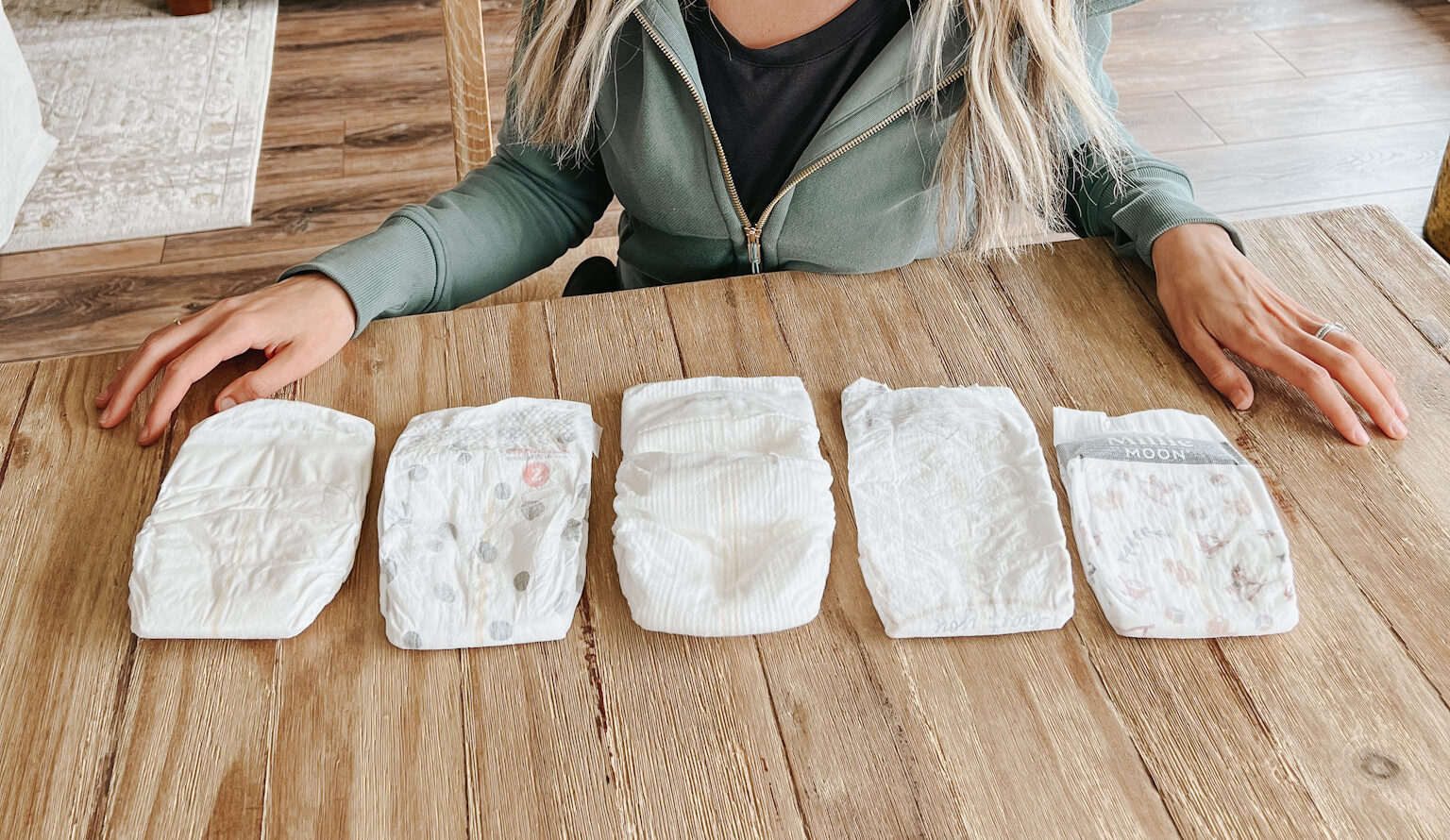This post is in partnership with Coterie. I only endorse products I believe in.
Ever feel like choosing a diaper is like navigating a labyrinth of trendy words and catchy claims? The industry is swarming with greenwashing and misleading marketing, so I’m here to guide you through this crazy maze. I care a lot about the products I put on my babies, so when I asked my community which diapers they thought were the most non-toxic and eco-friendly, I decided to put them all to the test.
I’m ranking Coterie, Huggies Special Delivery, Dyper, Pampers Pure and Millie Moon based on how green and clean they really are.

Criteria 1: Ingredient Safety
Coterie: Total chlorine free. Latex free. Fragrance free. Lotion free. Rubber free. Dye free. Alcohol free. Paraben free. Phthalate free. Hypoallergenic. Dermatologist-tested. No brighteners. No animal testing. They are the only brand to release a public Diaper Safety Report. 5/5
Huggies Special Delivery: Elemental chlorine free (pulp is bleached with chlorine dioxide, not as safe as TCF). Fragrance free. Clinically proven hypoallergenic. 2/5
Dyper: Elemental Chlorine free (pulp is bleached with chlorine dioxide, not as safe as TCF). Latex free. Fragrance free. Lotion free. Paraben free. Phthalate free. 3/5
Pampers Pure: Elemental chlorine free (pulp is bleached with chlorine dioxide, not as safe as TCF). Latex free. Fragrance free. Paraben free. Clinically proven hypoallergenic. 3/5
Millie Moon: Elemental chlorine free (pulp is bleached with chlorine dioxide, not as safe as TCF). Latex free. Fragrance free. Lotion free. 3/5
Criteria 2: Eco-friendly
I must underscore this: there is no such thing as a 100% biodegradable diaper.
Coterie: Coterie diapers are made with 25% plant-based materials from sustainably managed forests. The brand reduces packaging waste wherever possible. I appreciate that Coterie is extremely transparent about its processes and materials. So while not an actual compostable diaper, Coterie is thinking about the environment and planning for a more sustainable diaper future. 3/5
Huggies Special Delivery: Huggies Special Delivery diapers are made with 20% plant-based, responsibly sourced materials with pulp certified by the Forest Stewardship Council. 2/5
Dyper: Dyper diapers are made with 55% plant-based ingredients, including bamboo viscose which has made national attention recently for not being as eco-friendly as marketing makes it out to be because of the heavy chemical byproducts that are released during the production of this material. Dyper offers a disposal service for a hefty extra cost which only picks up diapers every two weeks (but I definitely can’t store dirty diapers in my garage for that long 🤢). This disposal process releases significant amounts of CO2 into the atmosphere, but they do take part in a Carbon Offset program. 4/5
Pampers Pure: Pampers Pure diapers are also made with wood pulp from sustainably managed forests similar to Coterie, and the diaper's top sheet layer is plant-based. They are produced with 100% certified renewable energy. 2/5
Millie Moon: Millie Moon sadly doesn’t seem to really care about being eco-friendly. There is little detail on the sustainability of its diapers, other than a mention of being built with sustainably sourced pulp. 1/5
Bonus Criteria: Absorbency… because what good is a diaper if it's not ultra absorbent?
Coterie: This diaper absorbs liquid instantly and feels incredibly dry. 5/5
Huggies Special Delivery: I’d consider this your average diaper in absorbency and wetness. 3/5
Dyper: While this diaper absorbs quite quickly, these feel the wettest of all the options. 2/5
Pampers Pure: These resisted absorbency of liquid, and definitely feel wet. 2/5
Millie Moon: Millie Moon absorbed the same as your average diaper. 3/5
The Cleanest and Greenest Diaper award goes to Coterie.
Get 10% off your subscription purchase of Coterie Diapers ($81 for a month of diapers): EXTRA10






